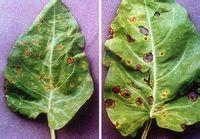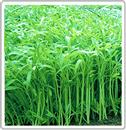Cultivation techniques of asparagus in plastic greenhouse in winter

Asparagus is widely cultivated in all parts of our province, and it is the main green leaf light vegetable in summer and autumn. Puccinellia oleifera likes high temperature and humidity, has strong heat tolerance and is not resistant to frost, but its stems and leaves die in case of frost. The optimum temperature for growth is 25: 30 ℃, and the growth is stagnant below 10 ℃, so plastic greenhouse should be used for out-of-season cultivation in winter. First, the varieties suitable for planting in our province are Dajihuang, Dagu Qing, sword leaf, Siyong, Dajiqing and so on. Second, in the cultivation season, greenhouse cultivation can basically be produced and supplied every year. In order to obtain higher economic benefits, it should be sown from October to December and be listed from December to March of the following year. Third, the growth rate of asparagus is fast, the branching ability is strong, and it needs more fertilizer and water. It is appropriate to apply sufficient basic fertilizer when planting. Generally, 1500000kg of rotten organic fertilizer and 100kg of plant ash are applied per mu, which is fully mixed with the soil to form a border (bag ditch) with a height of 20cm and a width of 130cm. Fourth, the seed coat of seed soaking to accelerate germination is thick and hard, if sowed directly, it will germinate slowly because of low temperature, and if it is exposed to low temperature and rain for a long time, it will cause seed rot, so it is appropriate to sow seeds after germination, soak seeds in warm water of about 30 ℃ for 18 hours, then wrap them in gauze and put them under 30 ℃ to accelerate germination, and sow seeds when 60% of the seeds are exposed to white. Fifth, sowing hollow cabbage can be sown or strip sowed, the amount of seeds used per mu is 1520kg, and after sowing, it is covered with fine soil about 1 cm thick. Strip sowing can dig a shallow trench 2 to 3 cm deep every 15 cm, spread the seeds evenly in the shallow ditch, cover it with fine soil, and then cover the border with a sunshade net, drench water, and uncover the sunshade net after emergence. 6. Greenhouse management 1. Temperature and humidity management: when cultivated in greenhouse in winter, the temperature is low, the humidity is high, and the continuous low temperature, overcast and rainy weather lasts for a long time, which is extremely disadvantageous to the growth of temperature-loving asparagus, so heat preservation and cold prevention is the key to off-season cultivation. After sowing, when the sun is sufficient and the temperature is high, we should strengthen ventilation and dehumidification, avoid the temperature in the greenhouse from higher than 35 ℃ as far as possible, prevent plant diseases, maintain exuberant growth and increase yield; if there is low temperature after sowing, the greenhouse should be sealed in time, and the temperature in the greenhouse should be kept above 10 ℃, otherwise it will cause freezing damage. The relative humidity of the air in the greenhouse may reach 100% in high temperature and rainy days. At this time, the thin films at or around the greenhouse must be opened in time for ventilation. two。 Fertilizer and water management: asparagus is a crop harvested many times, so in addition to applying sufficient base fertilizer, multiple topdressing must be carried out in order to obtain high yield. 10%-15% rare manure and urine can be applied at the seedling stage, with 1000-1500 kg per mu; when the seedlings have 3-4 true leaves, mixed application of compound fertilizer 15-20 kg and urea 2-4 kg; topdressing 1 time for each harvest during the harvest period, applying 5-8 kg compound fertilizer per mu. Asparagus needs a lot of water, so it should be watered frequently to keep the border moist. 3. Pest control: the main diseases of asparagus cultivated in greenhouse are seedling sudden disease and stem rot, which are caused by low temperature and high relative humidity. the occurrence of the disease can be reduced by reducing humidity. at the same time, it can be sprayed with 700 times of Reduscum or 800 times of carbendazim. The main pests are mites and red spiders, which can be controlled by 1000 times of propargite or 1500 times. General harvest 35-45 days after sowing, when the asparagus plant grows to 35 cm high, it should be harvested in time.
- Prev

Brown spot of Chinese cabbage
The symptoms were yellow-brown dots at first, and then expanded into round to oval, or irregular black-brown spots with a diameter of 4mm and obvious edges. When the disease is serious, the disease spots are connected to each other, and the diseased leaves wither and die. The disease occurs easily in rainy and humid weather or out-of-season cultivation. The method of prevention and control.
- Next

Pollution-free Cultivation of Water Spinach
Ipomoea aquatica, also known as Ipomoea aquatica or rattan vegetables, is a fast-growing green leafy vegetable actively introduced in recent years, leaves and tender stems for consumption, cold, fried, soup can be cooked, not only rich in nutrients, but also has the medicinal value of clearing heat and detoxification, diuresis, hemostasis, etc., has become one of the major hotels, restaurants special vegetables...
Related
- Where is it suitable to grow horseradish in China? it is expected to see the middle altitude horseradish in Alishan.
- How to prevent tomato virus disease reasonably? (Control methods included)
- Many people like to plant towel gourd on the balcony. What are the main points of this method and management?
- What crops can chili peppers be mixed with?
- Fertilization techniques and matters needing attention in Tomato
- What are the grafting techniques for peach seedlings in spring?
- Harm and control methods of root swelling disease of Chinese cabbage
- What are the pests of sweet potatoes? How to prevent and cure it?
- Symptoms, causes and Control methods of navel Rot in Tomato
- The cause of "Cucumber rotten bibcock" in Farmers' planting Cucumber and its Control Plan

